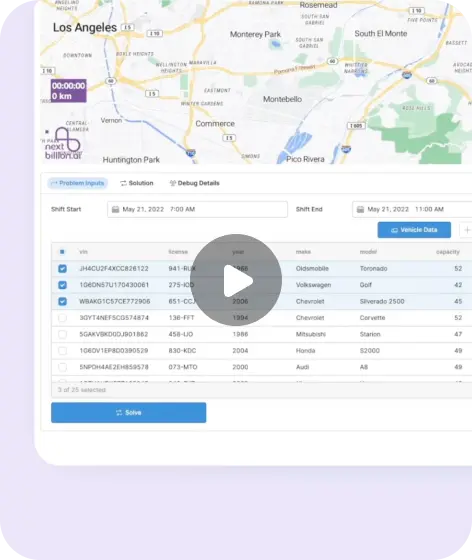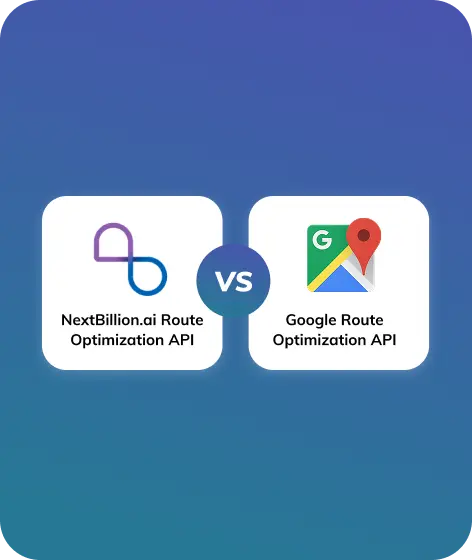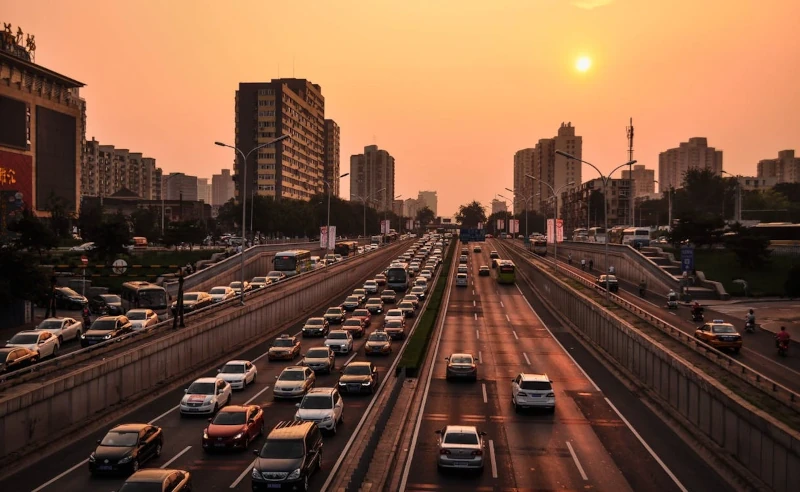
Table of Contents
We are witnessing a world where mobility, logistics, and transportation are more important than ever, route optimization is essential to guaranteeing effectiveness, economy, and sustainability. Although they have been in use for decades, traditional route optimization methods like Dijkstra’s algorithm, A* search, and Vehicle Routing Problems (VRP) frequently have issues with scalability and real-time flexibility. These issues are being resolved by clever, data-driven algorithms that improve decision-making, forecast traffic patterns, and dynamically optimize routes in real time, thanks to the development of deep learning.
This article will provide you the chance to comprehend the optimization of the development route and the difficulties it faces in the current scenario. Additionally, you will understand how deep learning techniques complement and facilitate route optimization through its characteristics.
Development of Route Optimization
Route optimization is the process of designing the fastest and most cost-effective route for your mobile field service professionals to get from one appointment to another. Route optimization means your mobile workforce spends less time driving, which enhances productivity and supports sustainability.
Businesses can lower carbon emissions, increase customer happiness, optimize logistical processes, and increase the effectiveness of route planning by implementing route optimization. Businesses can benefit from it in many ways, particularly in the areas of fleet management, trucking companies, logistics services, and delivery service providers.
Route optimization has several advantages for a range of sectors, including:
- By guaranteeing that the cars are given direct and time-efficient routes, it helps businesses reduce their fuel use.
- Businesses can take into account consumer preferences including delivery window, special requests, and timely service provider dispatch thanks to route optimization.
- By using less gasoline, it also contributes to a smaller carbon impact through more environmentally friendly route planning.
- Route optimization ensures that vehicles are utilized to their maximum capacity and efficiency.
- Route optimization produces information and insights that may be examined to determine areas for improvement and assist in making strategic decisions.
How Does the Route Optimization Algorithm Work?
In order to determine the most effective and ideal arrangement of locations or routes, transportation route optimization algorithms examine a number of variables and limitations associated with the routing problem. The following are the general steps that are part of the process:
- Input Data: The algorithm receives input data, including vehicle capacity, time frames for each stop, distances between sites, coordinates of the destinations to be visited, and other restrictions.
- Problem Formulation: The algorithm determines the precise routing problem that needs to be resolved based on the supplied data. This can be the Vehicle Routing Problem (VRP), the Traveling Salesman Problem (TSP), or another variant.
- First Solution: An initial answer produced by the algorithm may be based on basic heuristics or may be random. The optimization process is initiated with this first solution.
- Iterative Improvement: Using a variety of optimization strategies, the algorithm iteratively enhances the original answer. In order to minimize the overall objective function (e.g., distance, time, cost), it investigates alternative routes, swaps, or rearranges places.
- Evaluation: The algorithm assesses the quality of the solutions at each iteration and chooses the best one. The optimization goals and constraints serve as the foundation for the evaluation.
- Termination Condition: Until a termination condition is met, the algorithm iteratively improves its procedure. This requirement could be to adhere to a time constraint, attain a predetermined maximum number of iterations, or achieve a particular level of solution quality.
- Final Solution: The best-found solution, which is the optimum path or arrangement of places that satisfies all the requirements and goals, is the result of the method.
A route optimization algorithm is a mathematical or computer method used to determine the best and most efficient path or set of locations for a particular activity. It is frequently utilized in many different businesses, including public transportation, delivery services, logistics, and transportation, to optimize vehicle routes in order to minimize time, distance, or overall cost.
To offer the optimal answer to routing issues, these algorithms consider a number of variables, including vehicle capacities, time limits, traffic conditions, and distances between places. Businesses can increase overall productivity, optimize resource use, cut fuel consumption, and streamline operations by implementing route optimization algorithms.
Challenges in Traditional Route Optimization
Traditional approaches, though helpful in addressing early challenges, are now inadequate in the face of rapid technological progress. Their inherent limitations lead to increased costs, reduced efficiency, and unpredictable outcomes, highlighting the need for new solutions.
Traditional planning is plagued by limitations that drive up costs, diminish efficiency, and create unpredictable outcomes fraught with uncertainty. The efficacy of traditional planning methodologies is compromised by several limitations, notably increased costs, diminished efficiency, and an inherent unpredictability that engenders significant doubt. Traditional planning has long struggled with inherent gaps, resulting in costly inefficiencies and unpredictable outcomes. Furthermore, their unpredictability creates significant uncertainty.
Here are the key challenges that gave way to AI logistics solutions:
- Outdated data usage: Data requires frequent changes because it is highly dynamic. Conventional route planning frequently produced inefficient routes and increased operating expenses since it depended on static, out-of-date data.
- Incapacity to manage interruptions: Only with a certain amount of foresight can your company manage disruptions. Traditional route planning faced frequent challenges from weather variations, traffic congestion, and accidents. With no real-time tools to modify routes, this ultimately resulted in delivery timetables that were thrown off.
- Regulatory complexity: The regulations for import and export are very location-specific and administrative. Customs clearance, tariffs, and cross-border compliance laws are frequently prerequisites. International shipments are burdened and delayed by the reactive nature of traditional route planning.
- Rigid routing systems: Conventional planning is unable to react quickly to demand fluctuations or modify routes in real time. For logistics managers working with bigger fleets, it also makes it more difficult to scale and be agile. This is particularly inefficient when using several lanes with different levels of complexity.
- Increased operating costs: Conventional route planning frequently results in inefficient routes, lengthier trips, and more time spent on the road. Rising costs for labor, fuel, and maintenance have a cascading effect. The entire costing process is also impacted by unforeseen variable charges like tolls and congestion fees.
With the development of artificial intelligence technology, deep learning has become a powerful tool to solve these challenges. Deep learning models have demonstrated their ability to learn complex patterns and features from large-scale data, effectively learning from traffic sensor data to capture spatial and temporal dependencies that traditional methods might ignore.
What is a Deep Learning approach?
Deep learning is a machine learning method that uses several layers of neural networks to learn and identify intricate patterns. One of deep learning’s primary characteristics is its capacity to learn features automatically, eliminating the requirement for feature creation by hand. This enables deep learning to address increasingly challenging issues. For improved performance, deep learning can also be trained on vast volumes of data. Deep learning technology has advanced in a number of domains, including computer vision, natural language processing, and more.
How Deep Learning is Transforming Route Optimization
By facilitating more effective, flexible, and intelligent decision-making in supply chain management, logistics, and transportation, deep learning is transforming route optimization. Conventional route optimization techniques use heuristic algorithms, such as A* or Dijkstra’s, to determine the shortest way.
Despite their effectiveness, these methods have trouble with dynamic situations like traffic, bad weather, and real-time demand variations. By utilizing big datasets, real-time data processing, and predictive analytics, deep learning improves route optimization.
In the area of route optimization, deep learning offers distinct advantages over conventional machine learning. To get more accurate prediction results, deep learning, for instance, can employ a lot of past data for training. Large volumes of data can be processed rapidly by deep learning models because they can efficiently compute in parallel on GPUs. Because of its capacity for automatic feature learning, huge data training, and effective parallel computing, deep learning has demonstrated impressive performance in the area related to route optimization.
Deep learning is a machine learning method that uses several layers of neural networks to learn and identify intricate patterns. One of deep learning’s primary characteristics is its capacity to learn features automatically, eliminating the requirement for feature creation by hand. This enables deep learning to address increasingly challenging issues.
For improved performance, deep learning can also be trained on vast volumes of data. Deep learning technology has advanced in a number of domains, including computer vision, natural language processing, and more.
In the area of route optimization, deep learning offers distinct advantages over conventional machine learning. To get more accurate prediction results, deep learning, for instance, can employ a lot of past data for training. Large volumes of data can be processed rapidly by deep learning models because they can efficiently compute in parallel on GPUs . Because of its capacity for autonomous feature learning, huge data training, and effective parallel computing, deep learning has demonstrated impressive performance to ensure efficient route optimization.
The use of deep learning in this field is promising because of these benefits. Convolutional neural networks (CNNS), recurrent neural networks (RNNS), and their variations, such as Long Short-Term Memory networks (LSTM) and Gated Recurrent Units (GRUs), as well as variational autoencoders (VAE) and deep reinforcement learning, are the primary models for deep information. Each of these models has specific applications and benefits.
A deep learning model called a convolutional neural network (CNN) was created especially to handle data from two-dimensional images. Its primary capability is its ability to automatically extract the image’s local characteristics and merge them into higher-level features. CNN can efficiently extract the correlation between various traffic network sectors and is good at processing spatial data.
This deep learning model called a Recurrent Neural Network (RNN) can handle sequence data and remember knowledge from past inputs to better comprehend the present input. Long Short-Term Memory networks (LSTMS) and Gated Recurrent Units (GRUs) are RNN variants that are more adept at capturing long-term dependencies.
A generative deep learning model called the Variational Autoencoder (VAE) learns the possible distribution of data and produces fresh samples that resemble the training set. VAE can be applied to missing data completion and anomaly detection .
Through end-to-end learning, deep learning can automatically learn complicated data features in real-world data processing applications, successfully resolving many of the flaws and disadvantages of conventional approaches. Deep learning models can enhance prediction accuracy and generalization capabilities while processing vast amounts of data by making greater use of the data’s potential information.
Furthermore, transfer learning and other technologies enable deep learning to apply the knowledge acquired in one city to other cities, enhancing the model’s capacity for generalization.
Key Ways Deep Learning is Transforming Route Optimization
1. Predictive Traffic and Demand Forecasting

Recurrent neural networks (RNNs) and long short-term memory (LSTM) networks are two examples of deep learning models that use real-time and historical traffic data to forecast congestion patterns. These forecasts minimize travel time and optimize delivery schedules.
2. Dynamic Route Adjustments

Systems can continually learn from real-time input and dynamically modify their pathways thanks to deep reinforcement learning (DRL). DRL-powered models adjust to unforeseen delays, accidents, and road closures, in contrast to static algorithms.
3. Multi-Agent Route Optimization
For effective pickups or deliveries in ride-sharing and logistics, several cars must coordinate. Deep learning-based multi-agent systems optimize routes collectively by applying game theory and reinforcement learning, which increases productivity and lowers expenses.
4. Demand-Aware Routing in E-Commerce and Delivery Services
Businesses can proactively optimize delivery routes by using deep learning to forecast customer demand trends. For on-demand delivery businesses that need effective last-mile logistics, including FedEx, Uber Eats, and Amazon, this is essential.
5. Image and Sensor-Based Navigation
Deep learning is used by drones and autonomous cars to process sensor and visual data for real-time navigation. Traffic camera images are analyzed by convolutional neural networks (CNNs), and obstacle recognition is enhanced with LiDAR information.
6. Supply Chain and Fleet Optimization

Deep learning optimizes fleet management by analyzing vehicle conditions, fuel consumption, and maintenance schedules. Predictive maintenance powered by AI minimizes breakdowns and ensures seamless operations.
7. Enhancing Public Transportation Systems

Neural networks optimize public transport routes by analyzing passenger demand, peak hours, and environmental factors. AI-driven transit systems can reduce congestion and improve urban mobility.
The advent of deep learning has introduced powerful capabilities that enhance route optimization. This results in increased intelligence, flexibility, and efficiency.
Revolutionizing Route Optimization with Deep Learning
Deep learning models continue to evolve day by day. The future of route optimization looks very promising and is driven by many factors. Autonomous navigation, edge AI &Federated learning, sustainable logistics and ethical considerations are few among them.
We are witnessing a great development in the route optimization field with the involvement of deep learning. This learning is growing day by day. The future of route optimization looks very promising and is driven by many factors.
Autonomous navigation, edge AI &Federated learning, sustainable logistics and ethical considerations are few among them. Route optimization is expected to undergo further innovation and change in the future due to evolving market factors, client demands, and technology breakthroughs. What to anticipate is as follows:
- AI & Machine Learning: Algorithms driven by AI will be crucial to route optimization since they enable more precise forecasts, flexible routing plans, and proactive decision-making based on current data and past patterns.
- Drone Delivery and Autonomous Vehicles: The emergence of drones and autonomous vehicles will revolutionize route optimization by creating new opportunities for last-mile delivery, greater flexibility, and reduced operating expenses. More ecological and effective modes of transportation will be possible thanks to these technologies, especially in cities.
- Multi-Modal Optimization: To make supply chains more streamlined and effective, route optimization will progressively take into account many forms of transportation, including trucks, trains, ships, and airplanes. Businesses will be able to benefit from each mode’s advantages while cutting costs and travel times with this multi-modal strategy.
- Dynamic and Predictive Routing: Newer technology for route optimization will be more dynamic and predictive, modifying routes continuously in response to shifting conditions such as client demand, weather disruptions, and traffic congestion. Organizations will be able to optimize routes ahead of time thanks to predictive analytics, which will forecast future challenges and possibilities.
- Customer-Centric Approach: In order to enhance the overall customer experience, route optimization will become more client-centric, placing an emphasis on customized delivery options, adjustable time frames, and real-time tracking tools. To meet the evolving expectations of their customers, businesses will place a higher priority on convenience and transparency.
- Environmental Sustainability: Route optimization tactics will be driven by environmental concerns, with an emphasis on minimizing fuel usage, carbon emissions, and encouraging environmentally friendly modes of transportation like bicycle couriers, electric cars, and hydrogen-powered vehicles.
- Collaborative Logistics and the Sharing Economy: In order to optimize routes, collaborative platforms and the sharing economy will become more significant. They will enable businesses to combine assets, resources, and transportation capacity in order to reduce expenses and improve routes. A less environmental impact and more effective infrastructure use are the outcomes of this concerted effort.
Conclusion
Prior to the development of computers and technology, route optimization relied on manual route planning using pen and paper and actual maps. Route planning by hand was laborious, error-prone, and time-consuming. Over time, as AI and machine learning have evolved, so too have route optimization techniques. Deep learning is transforming route optimization, creating smarter, real-time, and more efficient navigation.
AI-powered models, including reinforcement learning, graph neural networks, and neural combinatorial optimization, are driving significant gains in efficiency, cost savings, and sustainability across industries like ride-sharing, logistics, and smart traffic management. Further advancements in AI promise even greater breakthroughs in how we navigate and transport goods.
Ongoing developments in deep learning, edge computing, and 5G connectivity will significantly improve route optimization capabilities, notwithstanding obstacles such computational complexity and data privacy issues. Businesses and towns will gain from more flexible, sustainable, and effective transportation networks as these technologies develop further, which will enhance consumer experiences and lessen their negative effects on the environment.
About Author
Divya Nair
Divya is a dedicated Technical Content Writer with experience of two years in the industry. Her expertise spans various forms of writing, including blogs and website content.













